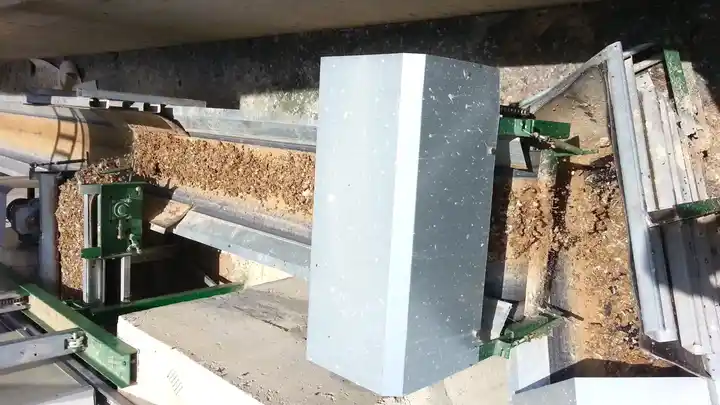animal feed pellet mill machine
Nov . 19, 2024 11:55 Back to list
animal feed pellet mill machine
The Evolution and Benefits of Animal Feed Pellet Mill Machines
The demand for efficient, high-quality animal feed has grown significantly over the years due to the increasing global population and the rising consumption of animal products. To meet this demand, the animal feed industry has evolved, leading to the development of advanced machinery, including the animal feed pellet mill machine. This article delves into the working principles, benefits, and significance of these machines in modern animal husbandry.
Understanding Animal Feed Pellet Mills
Animal feed pellet mills are specialized machines designed to process raw feed ingredients into pellet form. The core function of these machines is to compress and shape feed ingredients into compact pellets, optimizing them for storage, distribution, and consumption by livestock and other animals. The process involves several critical steps
1. Grinding Raw materials, such as grains, soybeans, and vitamins, are first ground into a fine powder. This step increases the surface area of the ingredients, facilitating better mixing and pellet formation.
2. Mixing The powdered ingredients are then thoroughly mixed with additives such as minerals, vitamins, and binders. A uniform mixture ensures that every pellet contains the necessary nutrients for optimal animal health.
3. Pelleting The mixed feed is fed into the pellet mill, where it is subjected to high temperatures and pressures. This step not only shapes the mixture into pellets but also helps improve the digestibility of the feed by gelatinizing starches and killing harmful bacteria.
4. Cooling After pelleting, the hot pellets are cooled down to prevent spoilage and degradation. Cooling also makes the pellets more stable and easier to handle.
5. Packaging Finally, the cooled pellets are packaged for distribution, ensuring that they maintain their nutritional value until they reach the end user.
Benefits of Using Pellet Mill Machines
animal feed pellet mill machine

The use of animal feed pellet mill machines brings numerous advantages to the feed manufacturing process and to livestock health and productivity.
1. Enhanced Nutritional Profile Pelleted feed is often more digestible than mash feed. The pelleting process alters the physical structure of feed, allowing animals to absorb more nutrients, leading to better growth rates and overall health.
2. Reduced Feed Wastage Pellets are compact and uniform in size, making them less prone to spillage and waste during feeding. This efficiency can lead to significant cost savings for farmers.
3. Improved Flavor and Palatability The pelleting process can enhance the flavor of animal feed, making it more appealing to livestock. This can lead to improved feed intake and ultimately better growth performance.
4. Convenient Storage and Handling Pelleted feed takes up less space compared to bulk feed. Its compact nature makes it easier to store and transport, a critical factor for large-scale operations.
5. Better Disease Management The high temperatures used during pelleting can effectively eliminate pathogens and spoilage organisms in the feed, reducing the risk of disease transmission among animals.
6. Customizability Modern pellet mills allow for the customization of feed formulations based on specific animal needs, dietary preferences, and nutritional requirements. This flexibility can be vital for niche markets and specialty livestock.
Conclusion
Animal feed pellet mill machines have revolutionized the way feed is produced, offering a technological solution to the growing challenges of the animal husbandry industry. By enhancing the nutritional value, reducing wastage, and improving the overall palatability of feed, these machines play a crucial role in ensuring better health and productivity of livestock. As the demand for high-quality animal products continues to rise, the importance of efficient feed production systems cannot be overstated. By investing in advanced feed pellet technology, farmers and producers can not only improve their operational efficiency but also contribute positively to the sustainability and welfare of livestock farming.
-
Hot Sale 24 & 18 Door Rabbit Cages - Premium Breeding Solutions
NewsJul.25,2025
-
Automatic Feeding Line System Pan Feeder Nipple Drinker - Anping County Yize Metal Products Co., Ltd.
NewsJul.21,2025
-
Automatic Feeding Line System Pan Feeder Nipple Drinker - Anping County Yize Metal Products Co., Ltd.
NewsJul.21,2025
-
Automatic Feeding Line System - Anping Yize | Precision & Nipple
NewsJul.21,2025
-
Automatic Feeding Line System - Anping Yize | Precision & Nipple
NewsJul.21,2025
-
Automatic Feeding Line System-Anping County Yize Metal Products Co., Ltd.|Efficient Feed Distribution&Customized Animal Farming Solutions
NewsJul.21,2025






